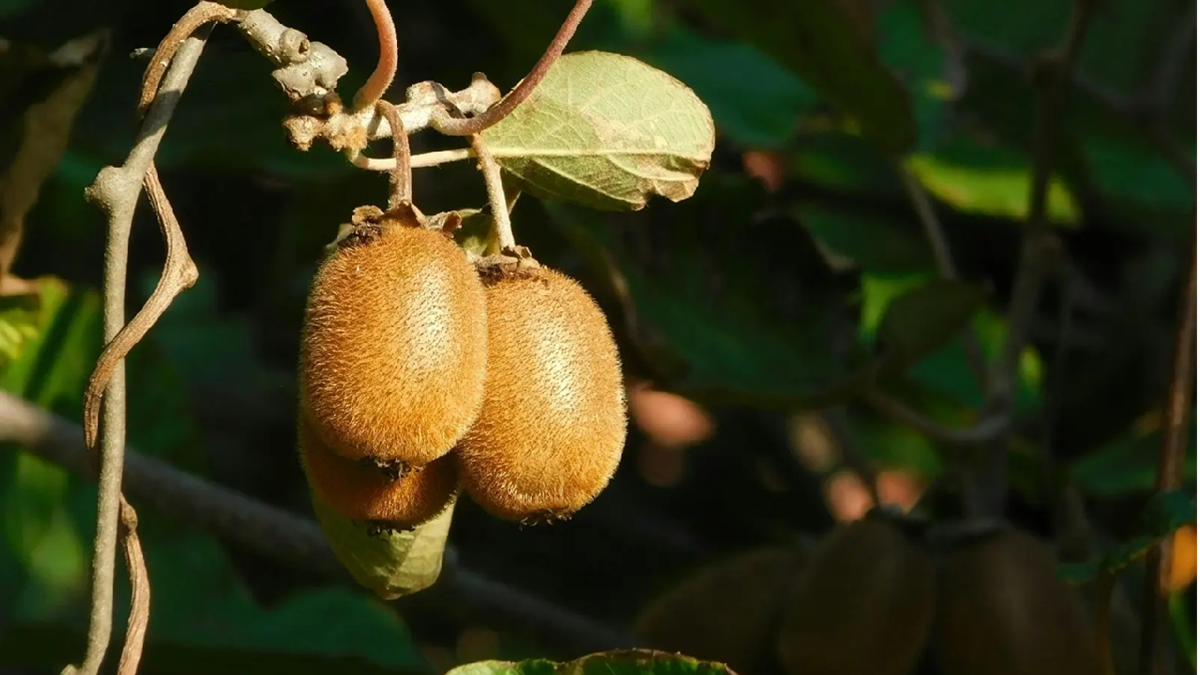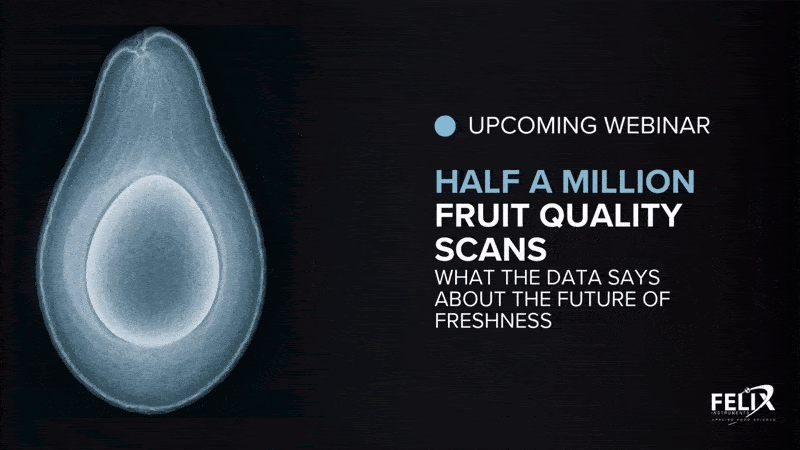Measurements
Application of NIR-Spectroscopy to Predict the Harvesting Maturity, Fruit Ripening, and Storage Ability of Ca-chitosan Treated Baby Kiwifruit
A study used near-infrared (NIR) spectroscopy using the F-750 Produce Quality Meter of FELIX INSTRUMENTS to develop a non-destructive method to estimate dry matter (DM), soluble sugar content (SSC), firmness, and acidity, to find harvest maturity, fruit ripening, and the effect of Ca-chitosan on the keeping quality of baby kiwifruits. The NIR wavelength range 729-975 nm was used for calibration by modified partial least square regression models. The correlation of the DM model predictions with actual content measured by laboratory methods was r = 0.74, while the SSC model predictions were less rigorous at r= 0.48. Ca-chitosan-treated fruits showed a higher DM content both in actual values (22.3%) and through NIR prediction (22.7%) than actual DM of untreated fruits (21.4%). The scientists concluded that the Ca-chitosan pre-harvest treatment enhanced fruit quality and that NIR spectroscopy effectively measures DM and SSC.
23 November, 2021
A study used near-infrared (NIR) spectroscopy using the F-750 Produce Quality Meter of FELIX INSTRUMENTS to develop a non-destructive method to estimate dry matter (DM), soluble sugar content (SSC), firmness, and acidity, to find harvest maturity, fruit ripening, and the effect of Ca-chitosan on the keeping quality of baby kiwifruits. The NIR wavelength range 729-975 nm was used for calibration by modified partial least square regression models. The correlation of the DM model predictions with actual content measured by laboratory methods was r = 0.74, while the SSC model predictions were less rigorous at r= 0.48. Ca-chitosan-treated fruits showed a higher DM content both in actual values (22.3%) and through NIR prediction (22.7%) than actual DM of untreated fruits (21.4%). The scientists concluded that the Ca-chitosan pre-harvest treatment enhanced fruit quality and that NIR spectroscopy effectively measures DM and SSC. NIR spectra calibration and prediction of physiochemical parametersThe NIR reaction wavelength range for soluble solids content (SSC) of kiwifruit has been reported as 800 to 1,100 nm (Lee et al., 2012) and for measuring carbohydrate content the wavelength range varies from 880, 900-930, and 970 nm. The spectra collected in the present study showed variations among fruit specimens (in 100 fruit samples) (Figure 1). The calibration range investigated for dry matter content (DM) and SSC using nondestructive predictions from F-750 Model Builder software (Felix Instruments) was observed at 729 - 975 nm wavelengths. The predicted R2 value for DM and SSC was 0.73, and the standard error deviation (SED) value was greater than 2. The baby kiwifruit cv. Seahan is known to be harvested at the beginning of October encompassing a full bloom date (108 DAFB). The change of fruit weight (FW) and maturity was observed for 2 weeks (Table 2). The SSC was increased by 1° Brix and the firmness was decreased by 3.7 N at the week before actual harvesting date. The correlation between the actual value and predicted model of DM were r = 0.74 (Figure 2). The predicted DM variation among the 384 harvested fruits is shown in Figure 3. Among 384 fruits, 71% fruits were shown 21 - 22% predicted DM, while 10% fruits were shown less than 21% predicted DM and 18% fruits were shown more than 23% predicted DM. Therefore, to prevent the accumulation of non-commodity acceptable fruits with unacceptable levels of SSC, it is necessary to study the uniformity of fruit quality in a sample through a nondestructive approach, such as NIR-spectroscopy. The estimated SSC values in fruits for predicated DM were recorded as, 9.1° Brix for 20% DM, 9.6° Brix for 21% DM, 11.1° Brix for 22% DM, and 11.2° Brix for 23% DM (Figure 4). This infers that higher DM content at harvest correlates to higher SSC. The correlation between the predicted DM content and the actual SSC, using SSC model was r = 0.65 (Figure 5). The correlation between the predicted value of SSC and the actual value of SSC was r = 0.48, which was lower than the actual SSC model. The use of NIR spectrometry to determine SSC, DM, and fruit firmness has been reported previously in kiwifruit (Schaare and Fraser, 2000; Clark et al., 2004). Park et al. (2003) found that the F-750 can be successfully used to predict SSC through spectra ranging from 800 - 1,100 nm in apple varieties, Gala? and Red Delicious? with a high accuracy (r = 0.97 and 0.96, respectively). Further, Angra et al. (2009) evaluated °Brix values of apple fruits with the wavelength that ranged from 800 - 1,600 nm. Similarly, Pissard et al. (2013) built models with NIR to predict °Brix in 150 apple genotypes. The present results obtained from F-750 and all other reports depicted that NIR is an accurate and reliable method to obtain physiochemical measurements particularly, SSC, °Brix, and starch content. Source Kim, J. G., Park, Y., Shin, M. H., Muneer, S., Lerud, R., Michelson, C., Il Kang, D., Min, J. H., & Chamidha Kumarihami, H. M. P. (2018). Application of NIR-Spectroscopy to predict the harvesting maturity, fruit ripening and storage ability of Ca-chitosan treated baby kiwifruit. Journal of Stored Products and Postharvest Research, 9(4), 44-53 https://doi.org/10.5897/JSPPR2018.0257 https://academicjournals.org/journal/JSPPR/article-abstract/54CD2E157598












